#Mediterranean Equestrian
Explore tagged Tumblr posts
Text

caballo menorquín
by sir20 for menorca-sir20
#original photographers#photographers on tumblr#photography#horses#animals#sir20#menorca#menorca-sir20#spain#mediterranean#mediterraneo#españa#horse#caballo#menorca sir20#minorque#minorca#balearicislands#illes balears#balearic islands#baleares#animal photography#animal portrait#fine art photography#original photography#artists on tumblr#creators on tumblr#europe#equine#equestrian
39 notes
·
View notes
Video
youtube
25/02/16 plage d'Oliva, détente des chevaux du MET
le MET (Mediterranean Equestrian Tour) centre équestre de compétion d'oliva Nova ne dispose pas de prés ni de paddock puisque il est en ville.
les chevaux vont donc se détendre sur la plage
caméra / montage : mister Dust
musique mixée par Hélène Chesnot / Dust
#youtube#chevaux#cheval#met#Mediterranean Equestrian Tour#Mediterranean Equestrian Tour oliva#oliva nova#plag#playa#platge#mister dust#pierreni#pierre nicolas chesnot#plage#plage et chevaux#playa y caballos#beach and horses#beach
0 notes
Text
Jerome Guery siegt bei der Mediterranean Equestrian Tour im GRAND PRIX von Oliva
Jérôme Guery ,der Sieger im GRAND PRIX – Trofeo CHG – Construcciones Hispano Germanas S.A (Foto:Archiv) Ein belgischer Dreifach-Erfolg im GRAND PRIX – Trofeo CHG – Construcciones Hispano Germanas S.A durch Jérôme Guery, Elke Appeltans und Bart Jay Junior Vandecasteele Den Parcours , gestaltet vom Course-Designer-Team Isabel Fernández de Cañete-(ESP), Roman Waldner (ITA) und Guifre Sirvent…
#Bart Jay Junior Vandecasteele#Basic Instinct Z#Elke Appeltans#Great Britain V#Jana Wargers#Jérôme GUERY#Mediterranean Equestrian Tour#Petronella Andersson#Titouan Schumacher#Vamos de La Pomme d&039;Or Z
0 notes
Photo

Tile - Roofing Large exterior shot of a two-story tuscan white stucco house with a tile roof.
0 notes
Text



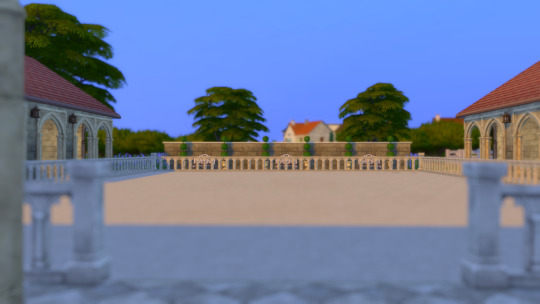


Thebe Equestrian Centre | 50x50 | CC Free
8 stables
Large arena
Tack and feed storage
Small grooms' apartment (2 bed/1 bath)
Packs: Horse Ranch, Cottage Living, Eco Lifestyle, Discover University, Get Together, Wedding Stories, Jungle Adventure, Outdoor Retreat, Romantic Garden, Castle Estate
I mostly intended this lot for photoshoots but it technically has all the features for gameplay as well. Original vibe was meant to be Mediterranean but I got my hands on the Castle Kit and now it's more medieval-ish?
CC free with minimal furnishing so please go nuts adding in all the wonderful CC that this community has made. I would love to be tagged if you use my lots!
Available on the Gallery, Origin ID is abbierainwood. Please don't reupload or claim as your own!
#the sims 4#ts4#sims 4#sims 4 horse ranch#ts4 equestrian#sims 4 equestrian#equus sims#equestrian sims
24 notes
·
View notes
Text
Prince Philip, Duke of Edinburgh
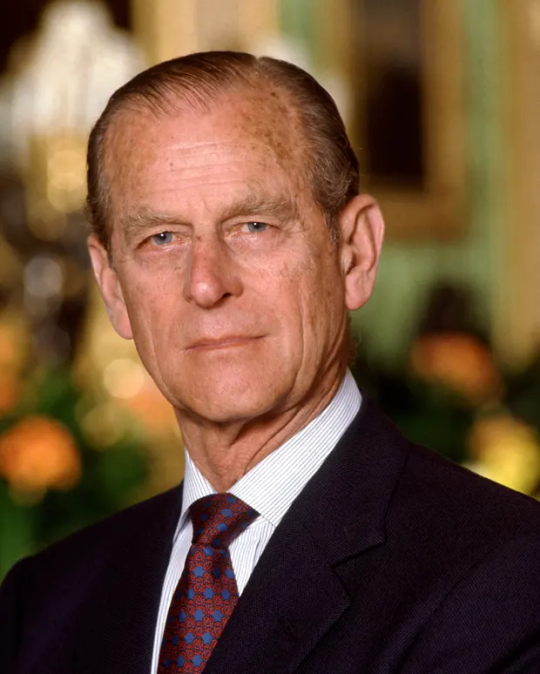
Physique: Average Build Height: 6' 0"
Prince Philip, Duke of Edinburgh (born Prince Philip of Greece and Denmark, later Philip Mountbatten; 10 June 1921 – 9 April 2021), was the husband of Queen Elizabeth II. As such, he was the consort of the British monarch from Elizabeth's accession on 6 February 1952 until his death in 2021, making him the longest-serving royal consort in history. He served with distinction in the Royal Navy in the British Mediterranean and Pacific fleets. Philip left active military service when Elizabeth ascended the throne in 1952, having reached the rank of commander.
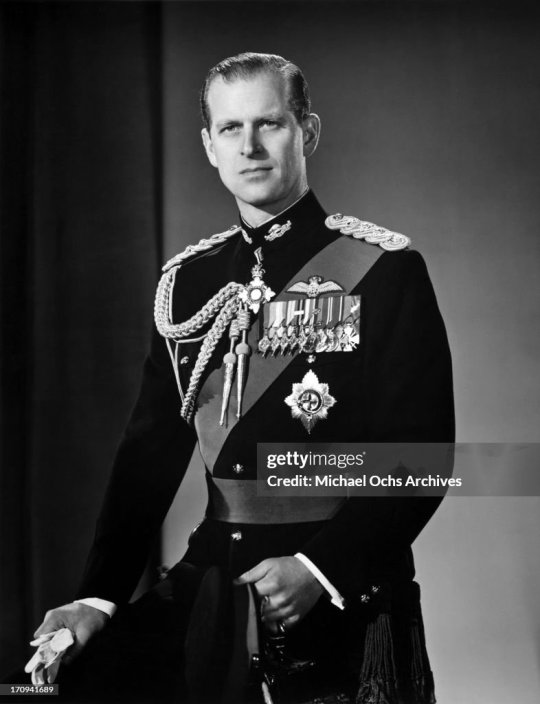
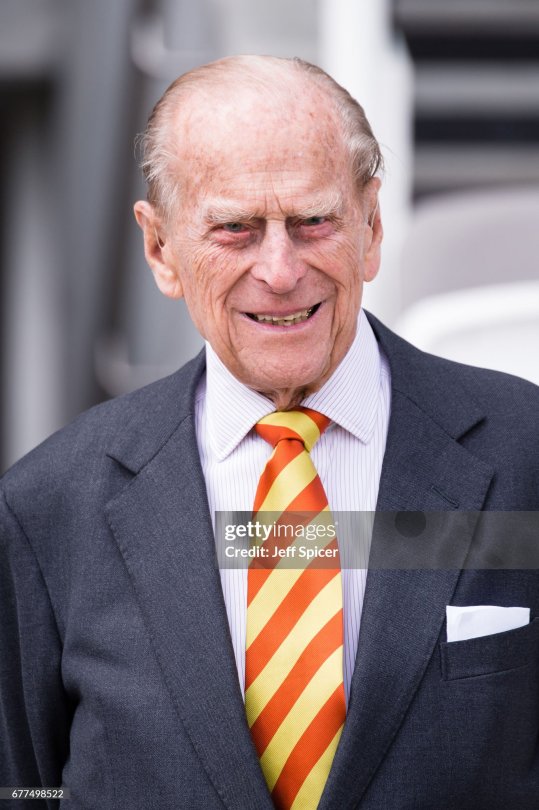
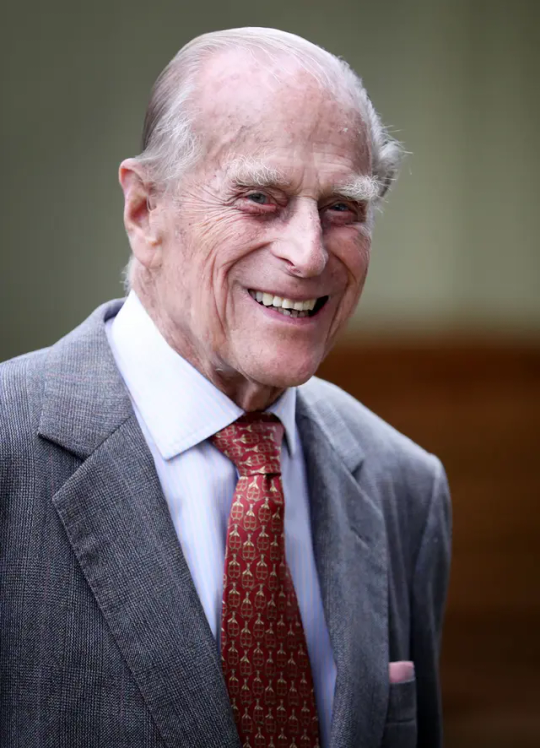

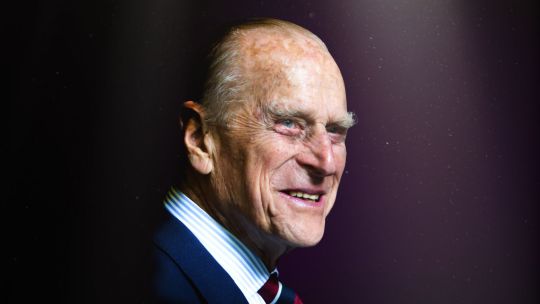
Considered a handsome man in his youth, Philip was a sports enthusiast who helped develop the equestrian event of carriage driving. He was a patron, president, or member of over 780 organizations, including the World Wide Fund for Nature, and served as chairman of The Duke of Edinburgh's Award, a youth awards programme for people aged 14 to 24.

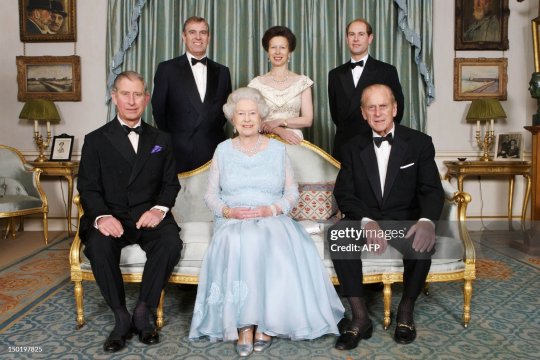
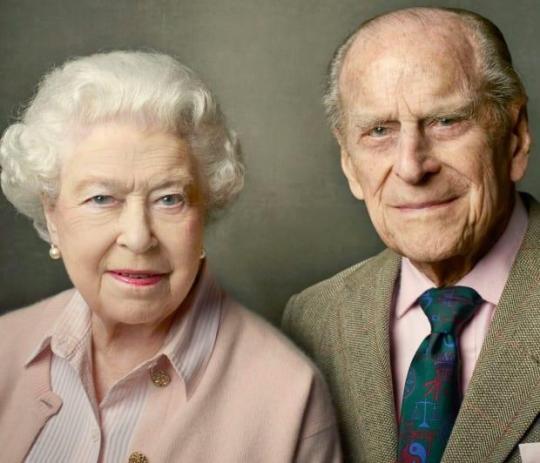
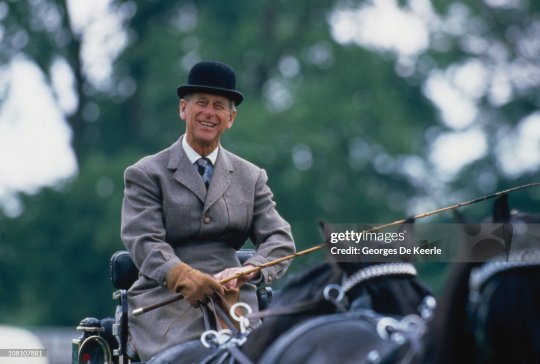
He married Elizabeth on 20 November 1947 and together they had four children: Charles, Anne, Andrew, and Edward. Philip is the longest-lived male member of the British royal family. He retired from his royal duties on 2 August 2017, aged 96, having completed 22,219 solo engagements and 5,493 speeches since 1952. Philip died in 2021 at Windsor Castle, at the age of 99.

27 notes
·
View notes
Text










Joe Montana's $28M, 500 Acre Napa Valley Home is a Mediterranean Paradise embodying European elegance and luxury, boasting a blend of French and Italian architectural inspirations. The estate is spread on 500 acres in the Napa Valley region, featuring an Italianate villa custom-built by the Montanas. The property features a basketball court that doubles as a tennis court, a skeet shooting range, a wine cellar for 3,500 bottles, olive groves, vineyards, a swimming pool, an outdoor kitchen, a pond for fly fishing and swimming, a bocce court, a large equestrian facility and arena, and trails for horseback riding. A picturesque setting of rose gardens, cypress trees, and a range of outdoor facilities, Villa Montana offers a truly opulent retreat in one of California’s most prestigious wine regions. It also has a quaint cottage draped in ivy, which offers a private retreat within the estate, as well as a charming two-story house, wrapped in natural wood and perched quietly among lush greenery. The property has neatly trimmed hedge lined pathways, flanked by olive trees, leading through the lush gardens, promising a journey of serene discovery in Napa’s wine country.
7 notes
·
View notes
Text
Modern Pentathlon Individual at Olympic Games in Paris 2024 🇫🇷
Emotions and high performances, what a day in Versailles!
Emotions et performances, quelle journée à Versailles !
The modern pentathlon, from military tradition, has its last ride at the 2024 Summer Olympics Games in Paris. A sad moment for modern Pentathlon, Horses make their final Olympic appearance at the Paris Games 🐎
The modern pentathlon is the successor to the ancient pentathlon, which comprised running, jumping, javelin, discus and wrestling. The modern pentathlon is an Olympic multisport that has been a core part of the Olympic Games for more than 100 years, that currently consists of fencing (one-touch épée), freestyle swimming, equestrian show jumping, laser pistol shooting, and cross-country running.
Just as running and javelin throwing and wrestling would serve a warrior of old, the command of a horse and accuracy of a sidearm would serve a modern, turn-of-the-20th-century soldier. A clear reason why, after 18 years of Baron Pierre de Coubertin’s activism, it was the 1912 Games where the modern pentathlon was first contested.
It was believed that this event, above all others, "tested a man's moral qualities as much as his physical resources and skills, producing there by the ideal, complete athlete". The growing popularity of this sport resulted in the foundation of an international federation, the Union Internationale de Pentathlon Moderne (UIPM), in 1848. It currently has over 120 member nations.
Baron Pierre de Coubertin, founder of the modern Olympic Games, highly appreciated the pentathlon of the ancient Games. Coubertin created the contest of the modern pentathlon to simulate the experience of a 19th-century cavalry soldier behind enemy lines: to ride an unfamiliar horse, fight enemies with pistol and sword, swim, and run to return to his own soldiers. He proposed a similar competition that would test the strengths of a “complete” athlete, but involve more modern disciplines, and he introduced the modern pentathlon in the 5th Olympiad in Stockholm in 1912.
Those disciplines appeared attractive to a large part of influential sportsmen, as they were in preparation for a possible war. They were supporting skills and competencies in men that might support the duties of war. Two years later, the Great War began. And during the interwar years, still-simmering tensions kept the sport on the map.
It wasn’t until the 1952 Helsinki Olympics that a civilian, a Swedish carpenter named Lars Hall, won gold, which was a huge deal. Up to that point, the sport was mainly practised — and dominated by — military personnel. (General George Patton - United States Army who commanded the Seventh Army in the Mediterranean Theatre of World War II competed in the 1912, Summer Olympics in Stockholm, Sweden finished 20th in a field of 32 athletes)
Modern pentathlon is made up of four events combining five sports:
Riding, with a show jumping course on an unfamiliar horse that the athlete is allocated in a draw just 20 minutes before they compete.

Fencing, which is split into two rounds: a ranking round where each athlete competes against each other athlete in a bout lasting one minute or until the first hit, and a second round based on the results of the first round. The format of the second round is single elimination, with each bout lasting 45 seconds. Points are scored for winning each bout.

Swimming, with a 200m freestyle event.

Running and Shooting, with a laser-run where athletes alternate between running and shooting at five targets from a distance of 10m.


The women’s event was introduced at the 2000 Olympic Games in Sydney. Modern pentathlon, was plunged into a scandal at the Tokyo Games in 2021 when a German coach struck a horse that refused to jump a fence.
The International Olympic Committee (IOC) dropped the sport from its initial list for the 2028 Los Angeles Games but approved its inclusion after the global governing body, of the (UIPM) replaced horse riding with obstacle racing.
However, the sport has changed quite a bit in its long Olympic history. For starters, laser guns eventually replaced handguns. Show jumping replaced cross-country riding in 1988, and 2000 saw the first women’s event. In 2012, organisers combined the foot race and shooting portions, and in 2016 introduced the concept of a bonus fencing round. Still, this recent change is the first time a discipline will be dropped completely.
It's a sad moment to witness, especially for those who have grown up riding horses. The feeling after Sunday's final was not so much one of sadness, but more of being part of something unique. This certainly won't be the last time they will be riding horses, as the athletes are looking forward to the challenge of obstacles. They cherish what will soon become a memory, recognising the elegant nature of the sport. It will be sad to see horses, your teammates with whom you must get to develop a quick relationship go into history in the Modern Pentathlon.

#Paris2024 #olympicsgames #pentathlonday #athlete # sports #history #olympics #soldier #army #cavalry #modernpentathlon #pentathlon #athletics #running #swimming #horseriding #shooting #fencing #escrime #riding #laser #pistol #equestrian #Phryge
Posted 11th August 2024
2 notes
·
View notes
Text
Fast Facts: Prince Philip
CNN Editorial Research
September 13, 2022

Personal
Birth date: June 10, 1921
Death date: April 9, 2021
Birth place: Corfu, Greece
Birth name: Prince Philip of Greece and Denmark
Father: Prince Andrew of Greece and Denmark
Mother: Princess Alice of Battenberg
Marriage: Queen Elizabeth II (20 November 1947- 9 April 2021, his death)
Children: Edward, Earl of Wessex (10 March 1964); Andrew, Duke of York (19 February 1960); Anne, Princess Royal (15 September 1950); King Charles III (14 November 1948)
Military: British Royal Navy, 1939-1953
Other Facts

Full title: HRH The Prince Philip, Duke of Edinburgh, Earl of Merioneth and Baron Greenwich, Knight of the Garter, Knight of the Thistle, Order of Merit, Knight Grand Cross of the Order of the British Empire, Companion of the Order of Australia, Companion of The Queen’s Service Order, Privy Counsellor.
His ancestry is not Greek by blood, but English, Russian, German/Prussian, and Danish.
The youngest of five children and the only son.
A third cousin of his wife, the Queen, and like her, he is a great-great-grandchild of Queen Victoria.
His interests were painting, environmental conservation, horses, flying, and sailing.
He has written books on birds, the environment, carriage driving, and other subjects.
After earning his RAF wings in 1953, Philip logged more than 5,900 hours in 59 different types of aircraft over the next 44 years.
Timeline

1922 - The overthrow of his brother, King Constantine I of Greece, causes Prince Andrew, Princess Alice and their five children to leave Greece and settle in Paris.
1930 - After his parents’ separation in 1930, Philip is sent to England and raised there by his maternal grandmother and uncle.
1940 - Serves as a midshipman, his first posting, on the HMS Ramillies of the Mediterranean Fleet.
1942 - Becomes a sub-lieutenant in the British Royal Navy.
July 1942 - Promoted to first lieutenant and executive officer aboard the HMS Wallace, a destroyer, and participates in the Allied landings in Sicily during World War II.
February 1947 - Becomes a naturalized British citizen and a commoner, using the surname Mountbatten, an English translation of his mother’s maiden name.
Prior to taking the British oath of citizenship, being sixth in line to the throne of Greece, he renounces all claims to titles in both Greece and Denmark.
July 10, 1947 - King George VI and Queen Elizabeth announce Elizabeth’s engagement to Philip.
November 19, 1947 - Invested as a Knight of the Order of the Garter and is given the titles of Duke of Edinburgh, Earl of Merioneth and Baron Greenwich.
November 20, 1947 - Marries Princess Elizabeth at Westminster Abbey.
His name changes from Lt. Philip Mountbatten to His Royal Highness Prince Philip, Duke of Edinburgh.
1948 - Appointed as a personal aide-de-camp to his father-in-law, King George VI.
1950 - Promoted to lieutenant-commander.
June 1952 - Promoted to commander, but his naval career ends with the death of King George VI and his wife’s ascension to the throne on February 6.
1953 - Appointed admiral of the fleet, field marshal of the Army and marshal of the Royal Air Force.
Designated regent presumptive by an act of parliament.
In the event of the Queen’s death or incapacitation, Philip would rule as regent for Prince Charles.
1956 - Launches the Duke of Edinburgh’s Award, which rewards children for achievements in personal development and community involvement.
1956-1970 - Serves as president of the Royal Yachting Association.
1957 - By Queen’s decree, is “granted style and titular dignity of a Prince of the United Kingdom.”
He is invested as a Grand Master and First or Principal Knight of the Order of the British Empire.
This decree restores his birth title of prince.

1961-1981 - First president of the World Wildlife Fund - UK.
1964-1986 - President of the International Equestrian Federation.
June 1968 - Awarded the Order of the Merit by the Queen, an honor bestowed to those of “great achievement in the fields of the arts, learning, literature, and science.”
Restricted to 24 members.
1975-1980 - Serves as president of the Royal Yachting Association for the second time.
1981-1996 - Serves as president of World Wildlife Fund International.
1996-present - President Emeritus of the World Wildlife Fund.
April 9, 2005 - Philip and the Queen are the only senior members of the royal family who do not attend Charles and Camilla Parker-Bowles’ civil wedding ceremony. They do attend the dedication service.
November 10, 2005 - His 58th wedding anniversary makes him the longest-serving British consort, outliving the wife of King George III, Queen Charlotte.
October 23, 2006 - Inspects British forces in southern Iraq.
May 3-8, 2007 - Philip and the Queen visit the United States for the 400th anniversary of America’s first British settlement in Jamestown in 1607.
They attend the Kentucky Derby on May 5 and a state dinner at the White House on May 7.
April 1, 2009 - Along with the Queen, meets US President Barack Obama and First Lady Michelle Obama at Buckingham Palace.
June 10, 2011 - His 90th birthday makes him the oldest-serving royal consort.

December 23-27, 2011 - Undergoes treatment for a blocked coronary artery at Papworth Hospital.
June 4-9, 2012 - hospitalized for a bladder infection at King Edward VII Hospital in London.
He misses part of the Jubilee celebrations commemorating the Queen’s 60th anniversary on the throne.
August 15-20, 2012 - Treated at Aberdeen Royal Infirmary for a bladder infection.
June 7-17, 2013 - A patient in London Clinic having been admitted for abdominal pain, he has exploratory surgery the following day and is released following his recuperation.
January 26, 2015 - Australian Prime Minister Tony Abbott awards that nation’s top honor, Knight of the Order of Australia, to Philip for his life of service throughout the Queen’s reign.
May 4, 2017 - Buckingham Palace announces that Philip will step down from public life after August 2017.
August 2, 2017 - Attends a parade of the Royal Marines at Buckingham Palace, carrying out the last of his thousands of public appearances before stepping back from public life.
April 3, 2018 - Philip is admitted to a London hospital to undergo planned surgery on his hip.
January 17, 2019 - Involved in a traffic accident when his car collides with another vehicle carrying two women, aged 28 and 45, as well as a nine-month-old baby boy.
In a statement the following day, a spokesperson said the Duke of Edinburgh had a “precautionary check-up on doctor’s advice that confirmed Philip had no injuries of concern.”
It is later announced that he will not face any charges over the accident.
February 9, 2019 - Buckingham Palace announces that Philip has surrendered his driving license following his January traffic accident that left a female driver injured.
December 20, 2019 - Philip is admitted to the hospital over a “pre-existing” condition, according to a statement from Buckingham Palace.
He leaves the hospital on December 24.
April 20, 2020 - Philip makes a rare public statement thanking those working across the UK to help tackle the coronavirus pandemic.
February 16, 2021 - Philip is taken to a London hospital after feeling unwell, according to a statement from Buckingham Palace.
On March 3, he undergoes a medical procedure for a heart condition.
March 16, 2021 - Philip leaves King Edward VII’s Hospital where he was recovering and returns to Windsor Castle, according to a statement from Buckingham Palace.
April 9, 2021 - Dies at the age of 99.
September 8, 2022 - Queen Elizabeth II dies, and Charles ascends to the throne.

🖤🤍🖤
#Prince Philip#Prince Philip of Greece and Denmark#Duke of Edinburgh#British Royal Family#royal consort#oldest-serving royal consort#Queen Elizabeth II
2 notes
·
View notes
Text
The Ultimate Guide to Buying Real Estate in Marbella and Sotogrande
When considering investing in the Spanish property market, two prime locations come to mind: Marbella and Sotogrande. These luxury destinations on the Mediterranean coast offer an unparalleled lifestyle, with stunning properties and a high-quality standard of living. Whether you're looking to buy real estate Marbella or buy real estate Sotogrande, understanding what these areas have to offer is essential for making an informed decision. In this blog, we'll delve into the benefits and considerations of purchasing property in these two exclusive locations, and how a professional like GomezAlvaro can guide you in your journey.
Why Choose Marbella for Real Estate Investment?
Marbella has long been considered one of the most sought-after locations in Spain, attracting international buyers from all over the world. Known for its luxurious lifestyle, year-round sunshine, and world-class amenities, it's no surprise that many opt to buy property Marbella. The city offers a diverse range of properties, from elegant villas in the hills to modern apartments overlooking the beach. With its proximity to the vibrant city of Málaga and high-end attractions such as golf courses, marinas, and Michelin-starred restaurants, Marbella is a prime destination for both permanent residence and holiday homes.

The area’s well-established real estate market means there is something for every investor, whether you're seeking a second home, a family residence, or a high-end rental property. Many buyers are drawn to the fact that Marbella offers both a relaxed Mediterranean lifestyle and the excitement of an international social scene, all within a short distance of major European cities.
Additionally, Marbella boasts a robust property market with stable growth, making it an attractive option for long-term investment. With a variety of properties available, from luxurious apartments to sprawling villas, there’s an option for every taste and budget. Whether you’re new to the Spanish property market or have experience in real estate investments, purchasing in Marbella offers opportunities for high returns and lasting value.
Sotogrande: An Exclusive Alternative for Luxury Living
While Marbella is undoubtedly the most famous luxury destination on the Costa del Sol, Sotogrande has quietly made a name for itself as another exclusive location for high-net-worth individuals looking to buy real estate Sotogrande. Nestled along the southern coast of Spain, just an hour's drive from Marbella, Sotogrande is a private, tranquil retreat that offers an elevated lifestyle. It is renowned for its pristine beaches, top-tier golf courses, equestrian facilities, and a strong sense of privacy and security. It’s a perfect location for those seeking a peaceful yet luxurious environment without the crowds.
When you buy property Sotogrande, you're not just investing in a home – you're investing in a way of life. Sotogrande is famous for its upscale residences and boutique community, offering a much quieter and more private alternative to the bustling energy of Marbella. Properties in Sotogrande are often larger and come with expansive outdoor spaces, making it a popular choice for those seeking a peaceful retreat. Additionally, the area is home to some of the finest golf courses in Europe, such as the prestigious Valderrama Golf Club, making it an excellent option for golf enthusiasts.

Another key selling point of Sotogrande real estate is the strong sense of exclusivity. With its limited number of properties and high demand for luxury homes, purchasing real estate here guarantees a certain level of prestige and status. Whether you’re looking for a private villa, a chic apartment with sea views, or a spacious townhouse, Sotogrande offers diverse options that appeal to those looking for a refined lifestyle.
Key Considerations When Purchasing Real Estate in Marbella or Sotogrande
While buying real estate Marbella and buy real estate Sotogrande are both exciting prospects, there are a few key considerations to keep in mind before making a purchase.
Budget and Financing: It’s important to establish a clear budget before you begin your property search. Both Marbella and Sotogrande offer luxury homes at varying price points, so it’s crucial to know what you’re willing to spend. It’s also worth noting that financing options may differ for international buyers, so you’ll want to explore mortgage possibilities and tax implications in Spain. Partnering with an expert team can ensure you secure the best possible deal.
Market Trends: The Spanish property market, particularly in areas like Marbella and Sotogrande, can fluctuate based on a variety of factors. It’s essential to understand the market trends before committing to a purchase. An experienced real estate professional will provide insights into local market conditions, helping you choose the right time to buy.
Lifestyle Fit: While both Marbella and Sotogrande offer exceptional lifestyles, they are quite different in terms of atmosphere. Marbella is more vibrant, with a bustling social scene, while Sotogrande is quieter and more private. Consider what lifestyle best suits your preferences before making your decision.
Legal Process and Documentation: Navigating the legalities of buying property in Spain can be complex, particularly if you're not familiar with Spanish property laws. Engaging a local real estate agency, like GomezAlvaro, will ensure that you have expert legal guidance throughout the process. From property checks to tax obligations, their team will make sure all aspects of the purchase are handled professionally and efficiently.
Why Choose GomezAlvaro for Your Property Investment?
Whether you're interested in purchasing in Marbella or Sotogrande, working with an experienced, trustworthy real estate agency is essential to ensure a smooth transaction. GomezAlvaro is renowned for its comprehensive services, offering expert advice and tailored solutions for clients looking to invest in these prestigious locations. With a deep understanding of the local market, they are perfectly positioned to help you find the ideal property and guide you through the buying process. Their personalized approach ensures that you can make an informed, confident decision every step of the way.
Conclusion
In conclusion, the decision to buy real estate Marbella or buy real estate Sotogrande is a highly personal one, driven by lifestyle preferences, budget, and investment goals. Both locations offer unique benefits and opportunities, whether you're drawn to the cosmopolitan atmosphere of Marbella or the exclusive charm of Sotogrande. With the right support from professionals like GomezAlvaro, your property journey in these stunning locations will be a smooth and rewarding experience.
0 notes
Text
Title: Horse Riding in Montenegro: Explore the Country's Natural Beauty on Horseback:
Montenegro, with its stunning landscapes and diverse terrains, is an ideal destination for horse riding montenegro. Whether you're an experienced rider or a beginner looking to explore the country's beautiful countryside, Montenegro offers a variety of horseback riding experiences. From riding along the Adriatic coastline to trekking through its rugged mountains and serene national parks, horseback riding in Montenegro is a unique way to immerse yourself in the country's natural beauty.

Why Horse Riding in Montenegro is a Must-Do Experience:
Montenegro's landscape is varied and breathtaking, with everything from lush forests and rolling hills to dramatic cliffs and pristine lakes. This makes it an incredible place for outdoor adventures, and horse riding offers one of the best ways to experience its unspoiled beauty. Whether you’re riding through ancient olive groves, following trails in national parks, or taking in panoramic views of the Adriatic Sea, Montenegro’s diverse landscapes provide the perfect backdrop for an unforgettable horseback riding adventure.
Additionally, Montenegro's mild Mediterranean climate makes it a great destination for riding year-round. The warmer coastal areas are perfect for horse riding in the summer months, while the cooler mountain regions provide an excellent opportunity to explore in spring and autumn.
Top Locations for Horse Riding in Montenegro:
Bay of Kotor The Bay of Kotor, a UNESCO World Heritage Site, is one of the most stunning regions in Montenegro. The rugged mountains surrounding the bay create dramatic backdrops as you ride along ancient trails. Horse riding tours in the Bay of Kotor often take you through picturesque coastal villages like Perast and Kotor, where you can admire Venetian architecture and narrow cobblestone streets. The bay's serene waters and breathtaking views make it an ideal location for a peaceful and scenic horseback ride.
Lovćen National Park If you're looking for a more adventurous ride, Lovćen National Park is the place to be. Known for its impressive mountain peaks and sweeping vistas, this park offers several riding trails suitable for riders of various skill levels. As you ride through the park's dense forests and open meadows, you'll be treated to panoramic views of Montenegro's stunning landscape, including the Bay of Kotor in the distance. Lovćen National Park is also home to the mausoleum of Petar II Petrović-Njegoš, a historical figure in Montenegrin history, adding a cultural aspect to your equestrian adventure.
Durmitor National Park Durmitor National Park, a UNESCO World Heritage Site, is one of Montenegro's most famous natural attractions. With its towering peaks, deep gorges, and crystal-clear lakes, Durmitor offers some of the most spectacular terrain for horse riding. The park's diverse landscapes range from alpine meadows to rugged mountains, providing a thrilling experience for intermediate and advanced riders. A horseback ride through Durmitor’s wilderness offers the chance to encounter wildlife like brown bears and wild boars, making it a true adventure.
Skadar Lake National Park For a more relaxed and picturesque riding experience, head to Skadar Lake National Park. This vast freshwater lake, surrounded by rolling hills and lush vegetation, is a haven for birdwatchers and nature lovers. Riding along the lake's shores allows you to experience Montenegro’s beauty at a slower pace, with plenty of opportunities to spot local wildlife. The park's serene atmosphere makes it a great destination for a calm, scenic ride through one of Montenegro’s most peaceful areas.
Zabljak and Tara Canyon For those who enjoy a challenge, Zabljak in the north of Montenegro offers some of the country’s most rugged and remote terrain. Tara Canyon, the deepest canyon in Europe, is a highlight of the area, offering stunning views that are best explored on horseback. The combination of breathtaking landscapes and remote, untamed terrain makes Zabljak and Tara Canyon a top destination for experienced riders seeking a more adventurous horse riding experience.
Horse Riding Tours and Operators in Montenegro:
Montenegro offers a variety of horse riding tours that cater to all levels of riders. From one-hour rides along the coast to multi-day treks through the mountains, there’s something for everyone. Many tour operators provide well-trained horses and experienced guides, ensuring a safe and enjoyable experience.
For beginners, there are plenty of short, easy rides available, typically around beaches or forested paths. Intermediate and advanced riders can opt for longer, more challenging routes that take you through Montenegro’s mountainous terrain or national parks.
Some of the best tour operators in Montenegro also offer specialized tours, such as sunset rides, beach rides, or wildlife-focused excursions. Riding along the coast during sunset is particularly popular, as the views of the Adriatic Sea combined with the colorful sky make for an unforgettable experience.
Conclusion
Horse riding in Montenegro is an unforgettable way to experience the country’s diverse and stunning landscapes. Whether you choose to ride along the coast, through national parks, or across rugged mountain terrain, the natural beauty of Montenegro provides the perfect setting for an equestrian adventure. With a range of options available for riders of all experience levels.
0 notes
Video
youtube
Finale CSO Oliva ( extraits )
dimanche 16 fevrier 2025 a eu lieu une des finale du concours de saut d'obstacles du Mediterranean Equestrian Tour ( MET ) à Oliva ( région de Valencia ), saison 2024/2025
le vainqueur a remporté un prix de 60000 €
quelques extraits des capacit��s de ces chevaux
caméra / montage : mister Dust
musique : Hélène Chesnot/Dust
#youtube#cso#concours saut d'ostacle#oliva#espagne#españa#MET#Mediterranean Equestrian Tour#Mediterranean Equestrian Tour Oliva#chevaus#cheval#jument#mare#yegua#chevaux#pierre nicolas chesnot#pierreNi#mister Dust#helene chesnot#hélène chesnot
1 note
·
View note
Text
Discover Menorca’s Festivals and Events with a Car

Menorca is not just a paradise for beach lovers but also a cultural hub rich with vibrant festivals and events that reflect its history and traditions. From local fiestas to international music festivals, the island offers something for everyone. To make the most of these celebrations, renting a car is the best way to travel conveniently across the island. With rent a car Menorca services, you can easily reach various event locations and experience Menorca’s unique charm.
Why Rent a Car in Menorca for Festivals?
Menorca’s festivals often take place in different towns and villages, each with its own traditions and unique settings. Public transportation on the island is limited, and taxis can be expensive, especially during peak times. Renting a car offers the flexibility to:
Travel between towns at your own pace.
Access remote villages where local fiestas are held.
Stay late at events without worrying about return transportation.
Top Festivals and Events to Explore by Car
1. Sant Joan Festival in Ciutadella (June)
The Sant Joan Festival is one of Menorca’s most famous celebrations, featuring traditional horse parades, fireworks, and music. Driving to Ciutadella with a rental car allows you to explore the festivities and return at your convenience.
2. Maó’s Fiesta de la Mare de Déu de Gràcia (September)
This vibrant festival in the island’s capital, Maó, includes parades, live music, and cultural events. A car rental makes it easy to explore the city and its surroundings while attending the festivities.
3. Binibeca Vell’s Summer Music Nights (July–August)
During the summer months, Binibeca Vell hosts open-air music nights, offering a relaxing cultural experience by the sea. Driving to this quaint fishing village with your rental car ensures a hassle-free visit.
4. Es Mercadal’s Fira des Cavall (May)
This horse fair showcases Menorca’s equestrian traditions with horse shows and competitions. Es Mercadal is located in the island’s heart, making it a perfect destination to reach by car.
5. Opera Week in Maó (October)
Held at the iconic Teatre Principal de Maó, Opera Week is a treat for music lovers. Renting a car ensures you can enjoy the performances and explore the surrounding areas.
6. Gastronomic Fairs and Markets (Various Dates)
Menorca hosts several food festivals celebrating local delicacies, such as cheese, wine, and seafood. With a car, you can easily hop between these events and savor the island’s culinary delights.
Scenic Drives to Festivals
Menorca’s festivals are as much about the journey as the destination. The island’s scenic routes offer breathtaking views, making your drive to these events part of the adventure:
Maó to Ciutadella: Enjoy a picturesque drive along the island’s main highway, Me-1, passing charming villages and rolling hills.
Es Mercadal to Fornells: This coastal route offers stunning views of the Mediterranean and is perfect for reaching seaside festivals.
Binibeca to Punta Prima: A short, scenic drive along the southern coastline, ideal for summer events.
Tips for Attending Festivals with a Rental Car
Book Early: During festival seasons, demand for rent a car Menorca services can be high. Book your car in advance to secure the best options.
Plan Parking: Festivals can attract large crowds, so check parking availability near event locations.
Drive Safely: Some roads may be crowded during festivals. Drive cautiously and follow local traffic rules.
Stay Late: Renting a car allows you to enjoy evening events without worrying about transport availability.
Benefits of Renting a Car for Festivals in Menorca
Convenience: Travel between events without relying on limited public transport schedules.
Flexibility: Create your own itinerary and explore nearby attractions before or after events.
Comfort: Avoid crowded buses and taxis, especially during peak festival hours.
Conclusion
Menorca’s festivals and events offer a unique glimpse into the island’s culture and traditions. By choosing rent a car Menorca services, you can enhance your experience, ensuring you don’t miss out on any of the celebrations. Whether it’s a lively fiesta, a serene music night, or a delicious food fair, exploring Menorca by car gives you the freedom to make the most of your visit. Celebrate, explore, and enjoy the beauty of Menorca like never before!
0 notes
Text
Perfect Romantic Villa in Italy
Introduction
Italy, a country synonymous with romance, art, and history, offers countless enchanting destinations perfect for a romantic getaway. Among its rolling hills, scenic coastlines, and charming villages, Italy boasts some of the world’s most romantic villas. Whether nestled in the heart of Tuscany, perched along the breathtaking Amalfi Coast, or hidden in the serene countryside of Umbria, these villas provide an idyllic setting for couples seeking an intimate and unforgettable escape. This guide will take you through some of the perfect romantic villa in Italy, highlighting their unique features, locations, and the magical experiences they offer.

Why Choose a Perfect Romantic Villa in Italy?
Intimate Privacy
One of the primary reasons to choose a perfect romantic villa in Italy is the unparalleled privacy it offers. Unlike hotels or resorts, villas provide a secluded space where you and your partner can enjoy each other’s company without interruptions. Private pools, secluded gardens, and personal terraces create an intimate atmosphere perfect for a romantic retreat.
Authentic Italian Charm
Staying in a villa allows you to experience authentic Italian living. These villas often feature traditional architecture, rustic furnishings, and breathtaking views, immersing you in the local culture. From restored farmhouses to historic estates, each villa has its unique charm and story, adding to the romance of your stay.
Personalized Experience
Romantic villas offer a level of personalization that can make your stay truly special. Many villas provide bespoke services such as private chefs, in-villa spa treatments, and personalized tours. Whether you want a candlelit dinner under the stars, a wine tasting tour, or a private cooking class, these tailored experiences ensure a memorable and romantic escape.
Top Romantic Villas in Italy
Tuscany: Villa La Vedetta
Tuscany, with its rolling hills, vineyards, and medieval towns, is a dream destination for couples. Villa La Vedetta, located near Florence, is a stunning example of a romantic villa. This 19th-century villa offers luxurious accommodations with elegant rooms, a beautiful garden, and an infinity pool overlooking the city. The villa’s rooftop terrace provides a perfect spot for watching the sunset over Florence while sipping a glass of Chianti.
Amalfi Coast: Villa Cimbrone
Perched on a cliff overlooking the Mediterranean Sea, Villa Cimbrone in Ravello is one of the most romantic villas on the Amalfi Coast. This historic villa, surrounded by lush gardens and offering panoramic sea views, is a haven of tranquility and beauty. The villa’s Terrace of Infinity, with its breathtaking vistas, is a perfect spot for a romantic moment. The elegant rooms, exquisite dining, and serene atmosphere make Villa Cimbrone an ideal choice for couples.
Umbria: Castello di Reschio
For a truly unique romantic escape, consider staying at Castello di Reschio in Umbria. This restored 10th-century castle, set within a sprawling estate, offers luxurious and secluded accommodations. Each suite is uniquely designed, blending historical charm with modern comforts. The castle’s private spa, equestrian center, and gourmet restaurant provide ample opportunities for relaxation and indulgence. The surrounding countryside, with its olive groves and vineyards, offers a picturesque backdrop for romantic walks and picnics.
Lake Como: Villa Balbianello
Lake Como, with its serene waters and majestic mountains, is a favorite destination for romance. Villa Balbianello, situated on a promontory overlooking the lake, is an exquisite example of Italian elegance and beauty. This historic villa, surrounded by terraced gardens and offering stunning lake views, has been the setting for many films and weddings. The villa’s opulent interiors, romantic loggia, and picturesque grounds provide an unforgettable setting for a romantic getaway.
Features and Amenities of Romantic Villas
Luxurious Accommodations
Romantic villas in Italy are known for their luxurious accommodations. Expect beautifully appointed bedrooms with high-quality linens, spacious living areas, and elegant bathrooms. Many villas also feature unique architectural details, such as vaulted ceilings, stone fireplaces, and antique furnishings, adding to their charm and character.
Private Pools and Gardens
A private pool is often a highlight of a romantic villa stay. Imagine lounging by the pool with your partner, surrounded by beautiful gardens and breathtaking views. Many villas also offer private gardens where you can enjoy a leisurely breakfast, a glass of wine, or a romantic dinner al fresco.
Gourmet Dining
Dining is a significant part of the Italian experience, and many romantic villas offer exceptional culinary experiences. Some villas come with fully-equipped kitchens where you can prepare your meals, while others offer the services of a private chef. Enjoying a candlelit dinner on your terrace, with local wines and fresh, seasonal ingredients, is a perfect way to celebrate your love.
Personalized Services
To enhance your romantic getaway, many villas offer personalized services tailored to your preferences. From in-villa spa treatments and yoga classes to private tours and wine tastings, these services ensure that your stay is as relaxing and enjoyable as possible. Some villas also provide concierge services to help you plan activities, make reservations, and cater to any special requests.
Tips for Booking a Romantic Villa in Italy
Book in Advance
Italy is a popular destination for romantic getaways, and the best villas can book up quickly, especially during peak seasons. To ensure you get the villa of your dreams, it’s advisable to book well in advance. Early booking also often provides better rates and more availability.
Consider the Location
Italy offers a diverse range of romantic destinations, each with its unique charm. Whether you prefer the rolling hills of Tuscany, the dramatic coastline of the Amalfi Coast, the serene lakes of Lombardy, or the historic towns of Umbria, consider what type of setting best suits your romantic escape. Each region offers different experiences, from wine tasting and cooking classes to sailing and sightseeing.
Check the Amenities
When choosing a perfect romantic villa in Italy, ensure it has the amenities that will make your stay special. Look for features such as private pools, beautiful gardens, panoramic views, and personalized services. Read descriptions carefully and check photos to make sure the villa meets your expectations.
Read Reviews
Reading reviews from previous guests can provide valuable insights into the villa’s quality and the experiences of other couples. Look for reviews that mention the villa’s atmosphere, amenities, and service to get a sense of what to expect.
Plan Romantic Activities
To make your stay even more special, plan some romantic activities in advance. Consider arranging a private dinner, a couples’ massage, a hot air balloon ride, or a sunset cruise. Many villas offer concierge services that can help you arrange these experiences.
Making the Most of Your Romantic Villa Stay
Savor the Moment
A romantic villa stay in Italy is a chance to disconnect from the outside world and focus on each other. Take time to savor each moment, whether you’re enjoying a leisurely breakfast on the terrace, taking a dip in the pool, or simply relaxing in each other’s company.
Explore the Surroundings
While the villa itself provides a beautiful retreat, exploring the local area can add to your romantic experience. Visit nearby towns and villages, enjoy local cuisine, and immerse yourself in the rich culture and history of the region. Many villas are conveniently located near attractions such as vineyards, historic sites, and scenic viewpoints.
Indulge in Local Cuisine
Italian cuisine is renowned for its flavor and variety, and your romantic villa stay is an excellent opportunity to indulge. Whether you hire a private chef, take a cooking class, or dine at local restaurants, make sure to savor the delicious food and wine of the region.
Capture the Memories
Your romantic getaway in Italy is an experience you’ll want to remember forever. Take plenty of photos to capture the beautiful moments and stunning scenery. Consider hiring a professional photographer for a photoshoot to commemorate your trip.
Relax and Reconnect
Above all, use your time at the villa to relax and reconnect with your partner. Enjoy the peace and tranquility of your surroundings, pamper yourselves with luxurious amenities, and take the time to appreciate each other’s company.
Conclusion
A perfect romantic villa in Italy offers the perfect setting for an unforgettable getaway with your loved one. From the rolling hills of Tuscany to the stunning Amalfi Coast, Italy’s romantic villas provide luxurious accommodations, breathtaking views, and personalized experiences that make for a truly special trip. By choosing the right villa, planning your stay carefully, and making the most of the local culture and cuisine, you can create memories that will last a lifetime. Whether you’re celebrating an anniversary, honeymoon, or simply taking time to reconnect, a romantic villa in Italy is the ultimate escape for couples in love.
0 notes
Photo

A List of All Key Events This Year, with Links to More Details About Them
Wellington, Florida, USA – March 14, 2024 – It’s tv for showjumping and the beautiful 2024 Saut Hermès CSI 5* this week at the Grand Palais, one of the most memorable stages for the noble sport to promote the talent of riders and their higher- flying beasts.
Across the sea in Mexico, Club Hípico Coapexpan brings many excitement, offering CSI 5* &, CSI 2* groups throughout the week. With the 10th week of the Winter Equestrian Festival CSI 4* at Wellington International and CSI 4*- W in Ocala, both in the Sunshine State, hoobeats can be heard at the heart of the winter season in southwestern Florida.
There are many more happening all over the world, so speak to the list of activities below for details and links to more details about each.
1 ) Saut Hermès– Paris CSI 5* https://www.sauthermes.com/fr/
2 ) Coapexpan CSI 5* &, CSI 2* https://www.facebook.com/ClubHipicoCoapexpan
3 ) Sit Oak International – Ocala CSI 4*- W https://liveoakinternational.com/
4 ) Wellington CSI 4* Winter Equestrian Festival https://wellingtoninternational.com/
5 ) Andalucía Sunshine Tour – Vejer de La Frontera CSI 4* https://www.sunshinetour.net/
6 ) Thermal CSI 4* Desert International Horse Park https://deserthorsepark.com/
7 ) Oliva Nova CSI 3- Mediterranean Equestrian Tour http://metoliva.com/
8 ) Toscana Tour – Arezzo CSI 3* https://arezzoequestriancentre.com/
9 ) Gorla Minore CSI 3* Equieffe Equestrian Centre https://equieffe.it/
10 ) Borgo La Caccia – Bedizzole CSI 3* https://www.borgolacaccia.it/
11 ) Sarasota CSI 2 at TerraNova Equestrian Center https://www.terranovaequestrian.com/
12 ) Azelhof – Lier CSI 2* https://azelhof.be/en/home
13 ) X- Bionic Equestrian Sphere – Samorin CSI 2* https://www.x-bionicsphere.com/en/sport/horse-riding/
14 ) Aix- Meyreuil International CSI 2* https://csi.aix-meyreuil.fr/en/home/
Origin: FEI – Fédération Equestre Internationale
Text: Jumper News, no duplication without consent.
Photo: © Jumper News / JC Markun
www.jumpernews.com
Facebook
Instagram
Twitter
YouTube
Tumblr
Related
Categories: English, Week Preview
Identified as: Equestrian, Activities, Horses, Jumper News, Jumper News France, Jumper News USA, Showjumping, Week Preview
0 notes
Text
Riding Through History: Equestrian Horse Riding Tours in ANCIENT ROME
The history of Ancient Rome stands as an epic tale that unfolded over centuries, shaping the destiny of a city that would become a powerhouse of civilization. From its legendary foundation to the pinnacle of its imperial might, Ancient Rome's history is a saga of political intrigue, military conquests, cultural achievements, and enduring legacy.
The story of Ancient Rome begins with the legendary tale of Romulus and Remus, twin brothers raised by a she-wolf, who went on to establish the city on the banks of the Tiber River in 753 BCE. This mythological origin, though not historically accurate, captures the essence of Rome's dramatic and mythical beginnings.
The Roman Republic, established around 509 BCE, marked a pivotal phase in Ancient Rome's history. It was a time of political evolution, where the city-state transformed into a powerful republic. The political structure of the republic featured a Senate and two consuls, embodying the ideals of checks and balances. The Republic's expansionist policies led to the conquest of neighboring territories, and by the 2nd century BCE, Rome's influence stretched from Spain to Greece.
The Punic Wars against Carthage, particularly the Second Punic War led by the brilliant general Hannibal, showcased Rome's military prowess. The famous Carthaginian general crossed the Alps with his elephants, surprising and challenging Rome in ways that had never been anticipated. However, Rome emerged victorious, solidifying its dominance in the Mediterranean.
The internal strife of the Roman Republic, marked by social and political tensions, eventually culminated in the rise of Julius Caesar. Caesar's crossing of the Rubicon River in 49 BCE ignited a civil war, and his eventual appointment as dictator marked the end of the Roman Republic and the beginning of the Roman Empire.
The subsequent period witnessed the rise of Augustus Caesar as the first Roman Emperor, signaling the start of the Pax Romana (Roman Peace) – a time of relative stability and prosperity that lasted for around two centuries. During this era, Rome reached the zenith of its territorial expansion, encompassing regions from Britain to Egypt.
The architectural marvels of Ancient Rome, such as the Colosseum, the Roman Forum, and the Pantheon, stand as enduring symbols of Roman engineering and innovation. The city's cultural achievements in literature, philosophy, art, and law have had a profound and lasting impact on Western civilization.
The decline of Ancient Rome is a complex narrative involving economic challenges, external invasions, political instability, and the eventual division of the empire into the Western and Eastern Roman Empires. The sack of Rome by barbarian tribes in 410 CE and the eventual fall of the Western Roman Empire in 476 CE marked the end of Ancient Rome.

Despite its fall, the legacy of Ancient Rome endured. The Roman legal system, Latin language, architecture, engineering, and governance structures continued to shape the course of history in Europe and beyond. The Renaissance, in particular, witnessed a revival of interest in Ancient Rome, with scholars and artists drawing inspiration from its classical achievements.
In conclusion, the history of Ancient Rome is a captivating tale of rise, triumph, and eventual decline. From a humble beginning on the banks of the Tiber to a sprawling empire that left an indelible mark on the world, Ancient Rome's story is a testament to the enduring power of human civilization.For more details visit our website: www.ridingancientrome.it
#horseback riding#riding horse#horse rental#equestrian horse#horseback riding tours#horse and ride#horse back#horseback riding near me#equestrian riding#riding tour#equestrian horse riding#ride the horse#horse riding stables#horse stable rentals#horse riding a horse#horseback riding stables#history of ancient rome#natural park#sport activity#rome natural park#rome ancient history sites#ANCIENT ROME#guided tours of Rome#Activities in Rome
0 notes